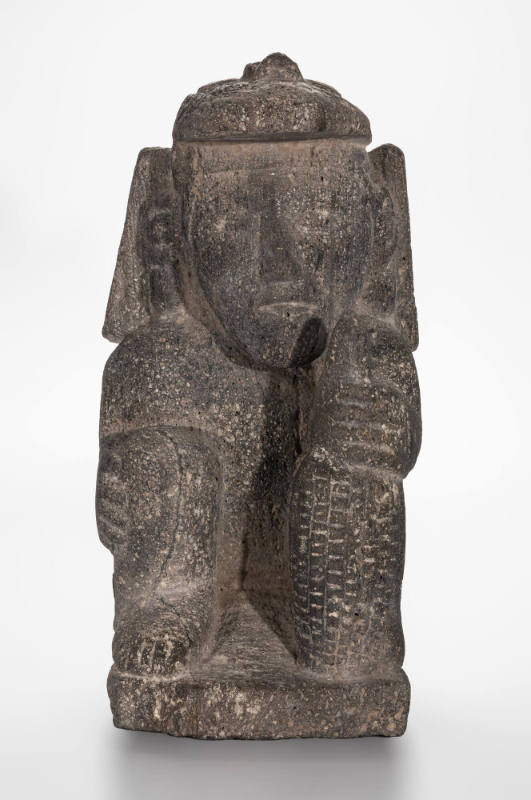





Object Details
Culture
Aztec (Mexico)
Date
1325–1521 CE
Medium
Volcanic stone
Dimensions
15 1/2 × 8 × 8 1/8 inches (39.4 × 20.3 × 20.6 cm)
Credit Line
Acquired through the Membership Purchase Fund
Object
Number
73.013.002
BRIEF DESCRIPTIONThis carved stone Aztec sculpture depicts a seated human figure holding a corncob.W(…)
BRIEF DESCRIPTIONThis carved stone Aztec sculpture depicts a seated human figure holding a corncob.WHERE WAS IT MADE?This sculpture was made in what is now Mexico.HOW WAS IT MADE?This sculpture was carved from a piece of volcanic stone. Hand tools made from harder stones and wood, as well as fiber cords, were used to carve the stone. To ease the work, sand was used as an abrasive, and water as a lubricant.HOW WAS IT USED?This sculpture probably came from a shrine, where people deposited bundles of goods. The sacred force of gods such as Tlaloc did not reside in these sculptures, but rather in the sacred bundles deposited along with them. The Aztecs did not view their gods (teotl) as personifications in the same way as the Greeks and the Romans viewed theirs, but rather as beings able to draw upon powerful natural forces. Tlaloc and other Aztec deities were worshipped through blood sacrifice. Because of Tlaloc’s importance in providing life-giving rain to arid Mexico, sacrificial victims (especially children) were sometimes drowned or made to cry before being killed.WHY DOES IT LOOK LIKE THIS?Notice the corn cob in the figure’s left hand. Corn, or maize (Zea mays) was the staple crop of pre-Columbian Mexico, and the success of Aztec farmers in cultivating a good corn crop each year was critical in supporting the large population. Look at the mask pushed to the top of the figure’s head; this mask represents Tlaloc, the Aztec rain god. Tlaloc was associated with agricultural fertility. Kneeling female maize deity sculptures were common in rural shrines, while the bloody iconography associated with Tlaloc dominated in the more urban areas. Notice the pitted surface of the sculpture: this is characteristic of volcanic stone, the material that the sculpture has been carved from.ABOUT THE AZTEC CULTURE:The Aztecs flourished in Mexico from AD 1440-1520, and were the dominant culture in Mexico at the time of the Spanish Conquest. From the 13th century the Valley of Mexico was the nucleus of Aztec civilization: here the capital of the Aztec Triple Alliance, the city of Tenochtitlan, was built upon raised islets in Lake Texcoco. The Triple Alliance formed its tributary empire expanding its power far beyond the Valley of Mexico, conquering other city states throughout Mesoamerica. In 1521 Hernán Cortés, along with a large number of Nahuatl speaking indigenous allies, conquered Tenochtitlan and defeated the Aztec Triple Alliance under the leadership of Hueyi Tlatoani Moctezuma II. Subsequently the Spanish founded the new settlement of Mexico City on the site of the ruined Aztec capital.












